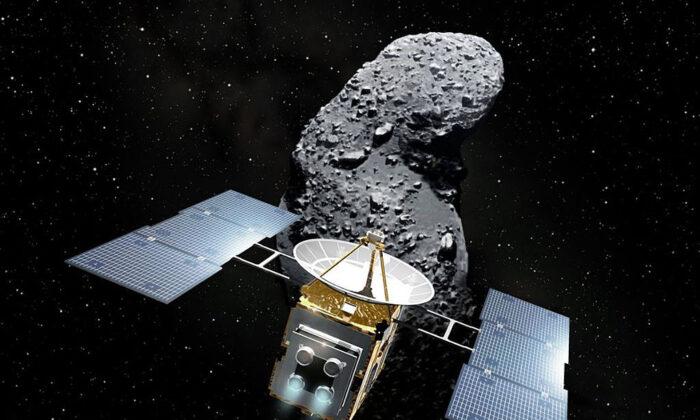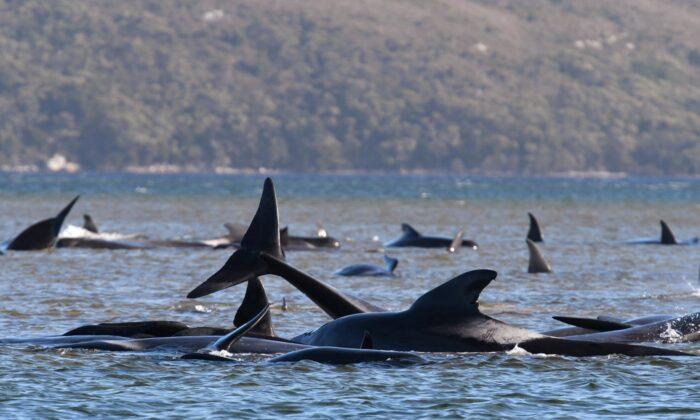After a six-year mission and a flight of hundreds of millions of kilometres, a Japanese space capsule has landed in the South Australian outback, carrying the first sub-surface asteroid samples.
The capsule has been travelling on board the Hayabusa2 spacecraft which first landed on the Ryugu asteroid, more than 300 million kilometres from earth, in February last year.
Once released, it entered Earth’s atmosphere early on Sunday morning. It briefly turned into a fireball before deploying a parachute and landing in the Woomera prohibited area.
“It was great ... It was a beautiful fireball, and I was so impressed,” said Hayabusa2 project manager Yuichi Tsuda from a command centre in Sagamihara, near Tokyo.
“I’ve waited for this day for six years.”
About two hours after the capsule’s re-entry, the Japan Aerospace Exploration Agency said its helicopter search team found the capsule, about 40cm in diameter, and was planning to retrieve it.
Masaki Fujimoto, from JAXA, said the asteroid samples may help answer a fundamental question, how did water and subsequently life, begin on Earth?
“Earth was formed close to the sun, so it was formed dry,” he said.
“Original Earth didn’t have water at all. So something had to bring water to our planet to make it habitable. Something like Ryugu brought water to earth and that’s why we are here.”
Tracking Hayabusa2 since its launch in 2014 has been the Deep Space Communication Network based in Canberra.
Director Ed Kruzins said the mission had certainly reached the most exciting phase.
“What’s particularly interesting about this vehicle is it runs solar-electric ion thrusters,” he said.
“So 66 kilograms of fuel can take you billions of kilometres. An extremely efficient way of manoeuvring.”
The release of the capsule over the USA and monitored from California, was successfully triggered late Saturday afternoon Australian time.
The Canberra centre is tracking Hayabusa2 as it “skips away” and leaves Earth on its extended mission, a 10-year journey to rendezvous in July 2031 with a much smaller asteroid known as 1998 KY26.
Science and Technology Minister Karen Andrews said the successful landing and discovery of the sample return capsule strengthened Australia’s position as a desired partner for future international space missions.
“This is an incredible accomplishment for science and space and builds on our strong working relationship with JAXA,” she said in a statement.
Agriculture Minister David Littleproud said the sample would provide scientific evidence of any biosecurity risks from asteroids.
“After the sample is retrieved, JAXA will return the sample to Japan,” he said.
“The best minds on the planet will then analyse whether there are any space invaders, as far as biosecurity is concerned, on asteroids.”





